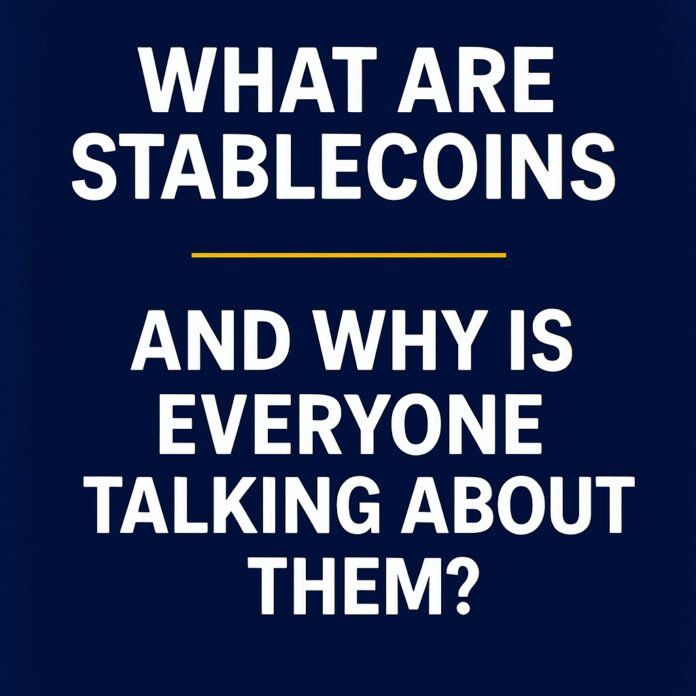In a world where crypto prices rise and fall by double digits overnight, one type of digital asset is quietly taking over: stablecoins.
They don’t promise moonshots. They don’t crash in a day.
What they offer is something much more powerful: stability.
So what exactly are stablecoins — and why are they suddenly at the center of every crypto conversation?
🚀 The Short Answer
Stablecoins are cryptocurrencies designed to hold a steady value, usually pegged to a fiat currency like the US dollar or the euro.
1 stablecoin = 1 USD (or 1 EUR), no matter what’s happening in the market.
Think of them as digital dollars that live on the blockchain.
🧠 Why Are Stablecoins So Popular?
Because they solve one of crypto’s biggest problems: volatility.
You can’t pay rent with Bitcoin if the price drops 15% overnight.
But with stablecoins, you get:
- ✅ Price stability
- ✅ 24/7 transfer speed
- ✅ Global accessibility
- ✅ Low fees
- ✅ Programmability (hello, DeFi & smart contracts)
That’s why stablecoins are booming — in payments, trading, remittances, and beyond.
🔍 The Main Types of Stablecoins
- Fiat-backed
- Backed 1:1 by real currency in a bank
- Examples: USDT (Tether), USDC (Circle), EURC
- ✅ Simple & widely used
- ❗️Requires trust in issuer
- Crypto-collateralized
- Backed by crypto like ETH (usually overcollateralized)
- Example: DAI
- ✅ Decentralized
- ❗️Still exposed to crypto price swings
- Algorithmic
- No collateral — uses supply & demand mechanics
- Example: UST (failed), FRAX
- ✅ Innovative
- ❗️High risk of depegging
💥 Why the Hype Now?
Stablecoins are hitting the headlines because:
- Big institutions (like Visa & PayPal) are getting in
- Governments are racing to regulate or launch their own (CBDCs)
- Developers are building entire ecosystems around them (DeFi, GameFi, RWAs)
- Users want faster, cheaper, and borderless money
They’re not just a crypto side story anymore — they’re becoming core financial infrastructure.
👀 Final Thought
Stablecoins may not be flashy, but they’re what makes crypto actually usable.
They’re the bridge between banks and blockchains.
Between volatility and real-world adoption.
Between hype — and utility.
And as the world races toward digital money, stablecoins are leading the charge.



